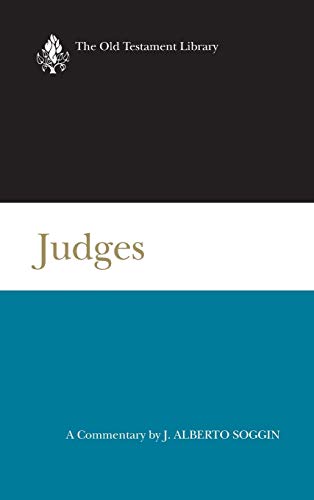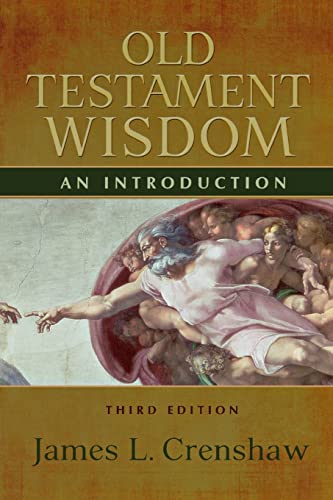Kingdoms of the Lord
Written by David F. Payne Reviewed By John J. BimsonThe sub-title of this book (A History of the Hebrew Kingdoms from Saul to the Fall of Jerusalem) is in some respects misleading, since there is more than a straightforward history here. The book is divided into four parts: Part One, ‘The Kings’, would be aptly described by the sub-title (though its first two chapters deal with the situation of the tribes during the time of the Judges); Part Two, ‘The Enemies’, describes Israel’s neighbours (not exclusively those who were hostile; e.g. Phoenicia and Egypt are included) and usefully concludes with a chapter on ‘False Religion’; Part Three, ‘The Prophets’, deals with the role and significance of the prophets from Samuel to Jeremiah; Part Four, ‘The Faith’, delineates the distinctive features of Israelite religion during the monarchic period.
The history and other aspects of the period are dealt with at an introductory level, making the book suitable for use with sixth forms and first-year classes in college/university, or for the general reader wanting a better understanding of the Old Testament. Any work which deals with a major portion of Old Testament history at this level inevitably invites comparison with Bright’s A History of Israel (to which Payne acknowledges his debt in the preface). This is especially so in the present case, since Bright’s work devotes only slightly less text to similar material (Bright, chs. 4–8, plus discussions of Egypt, Canaan, etc., in other sections). The question therefore arises as to whether Payne’s book actually fills a gap or simply duplicates material already available in a well-known textbook. There is undoubtedly much here which is adequately covered by Bright; on the other hand, as indicated by the above outline of its contents, the present work does have a distinctive emphasis, in that it underlines the role of the prophets in this period of Israel’s history. Part One, in spite of its title, assesses the contribution of the prophets as much as that of the kings; Part Three deals exclusively with the prophets; and Part Four, in surveying Israel’s faith, draws further on the prophetic literature.
The fact that the book is divided into four parts makes for ease of reference to individual subjects. This is particularly true of Part Two, where a reader of the Old Testament requiring handy background material on the Philistines, Assyrians, Canaanites, etc., will find excellent summaries introducing these peoples and highlighting the effects of their contacts with Israel. On the other hand, the decision to arrange the book in this way has also led to some unnecessary duplication. For example, Canaanite religion is discussed in one of the introductory chapters (pp. 8–12), and again in the chapter dealing specifically with the Canaanites (pp. 201–206); the arrival and settlement of the Philistines is similarly discussed twice (pp. 18–21; 135–138), as is Jeremiah’s ministry (pp. 122–132; 253–258). To be fair, these are not instances in which the same material is simply repeated. In each case a new emphasis or new information appears. Even so, a more economical arrangement would surely have been possible, saving the reader frequent experiences of déjà vu.
Payne’s treatment of historical-critical issues is generally conservative, but he does give space to discussing other views, e.g. the view that Zadok was chief priest of the Jebusites before being appointed by David to serve alongside Abiathar (contra 1 Ch. 24:1–6, where Zadok is given levitical ancestry); but Payne’s own conclusion is that Zadok was probably a priest well known in Israel before the conquest of Jerusalem (pp. 44–45). On the other hand, some readers will not find Payne’s approach as consistently conservative as they might wish. For example, he considers it ‘perhaps more likely that the narrative of 2 Kings 6:24–7:20 relates to a later date’ than the reign of Jehoram (p. 79).
The treatment of a few purely historical problems is surprisingly out of date. Payne refers on four occasions (pp. 94, 97, 156, 182) to ‘Azirau of Yaudi’, supposedly attested in the annals of Tiglath-pileser III, and confidently assumes his identity with Azariah of Judah. However, N. Na’aman’s study of 1974 (BASOR 124, pp. 25–39) showed that the names ‘Azriau’ and ‘Yaudi’ actually occur in texts dating from different periods; hence ‘Azriau’ of ‘Yaudi’ is a scholarly myth. Payne’s repeated use of this expression is especially odd in view of a footnote (p. 94) in which he shows himself familiar with Na’aman’s findings. The Assyrian text mentioning ‘Yaudi’ actually dates from the time of Sennacherib, and the king of ‘Yaudi’ is Hezekiah, not Azariah. Yet in one place Payne cites this text as evidence that Tiglath-pileser III received tribute from Azariah (p. 98). Payne offers the traditional view that Solomon exploited the coppermines of the Negeb and exported copper from Ezion-geber (p. 61), making no reference at all to B. Rothenberg’s now famous discoveries at Timna in 1969, generally held to have overturned that view. Another surprise is his suggestion (p. 170) that Joseph may have risen to prominence in Egypt as late as the reign of Akhenaton, rather than under the Hyksos; this view, poorly supported, and impossible to reconcile with any straightforward reading of the Old Testament’s chronology, has never commanded a significant following. One final (and minor) quibble on the historical side: Payne does not consistently follow one chronological scheme. On p. 171 he gives the date when Shoshenq I (biblical Shishak) founded Egypt’s XXIInd Dynasty as 940 bc, which, because of the synchronism of Shishak’s invasion of Judah with the fifth year of Rehoboam, requires Albright’s date of 922 bc for the division of the kingdom. It is incompatible with Thiele’s dates for the monarchy (higher by nine years at this point), which, as Payne himself says, ‘have usually been followed’ in the book (p. 292). The chronology of the monarchy is a notoriously complex subject, and some potential confusion could have been avoided if a single scheme had been rigorously followed throughout.
The book is usefully illustrated with fifteen black-and-white photographs (nb: nos. 3 and 4, and nos 11 and 12, are printed in reverse order), and three sketch maps (of the ancient Near East, Palestine, and Jerusalem). The reviewer wishes, however, that more sketch-maps had been included to illustrate particular sections of the text, e.g. dealing with the key battles of the Judges period and Saul’s wars with the Philistines (described in chs. 2 and 3 respectively). A map showing southern Transjordan would also have been a useful complement to the discussion of Edom and Moab in ch. 14 (where note 1 unhelpfully refers the reader to a map in another book, to which many may not have access).
There is an unwelcome sprinkling of printing errors. These are mostly minor, though at the top of p. 52 two lines are completely absent, being replaced by two duplicated from p. 55.
The book closes with a brief appendix on the chronology of the divided monarchy, a bibliography, and index of biblical passages, and a general index.
Notwithstanding the above criticisms, this is a readable and interesting introduction to the monarchic period, particularly useful in highlighting the tensions and ambiguities inherent in Hebrew kingship, and the role of the prophetic movement as the monarchy’s (often unheeded) conscience.
John J. Bimson
Trinity College, Bristol






